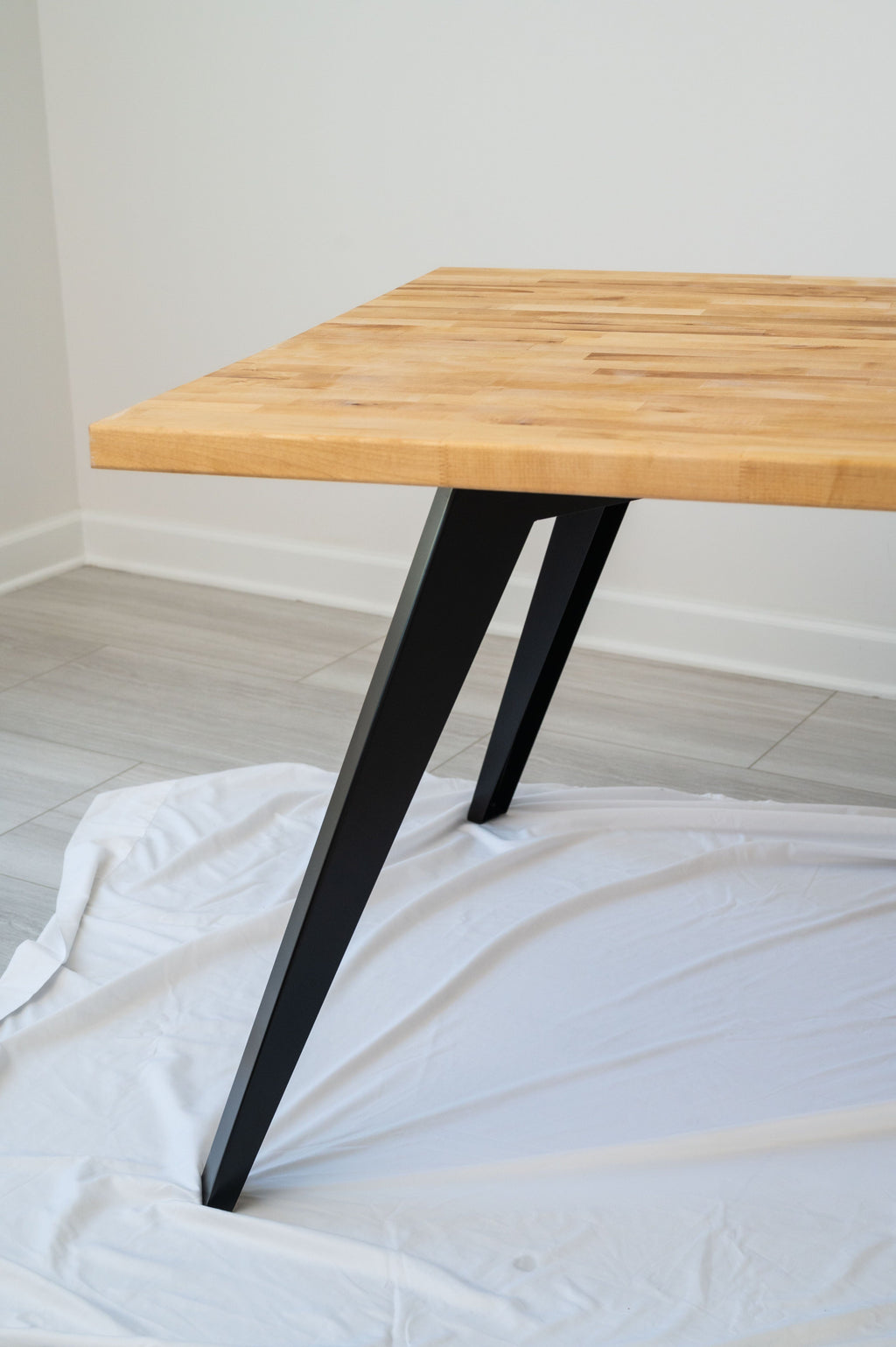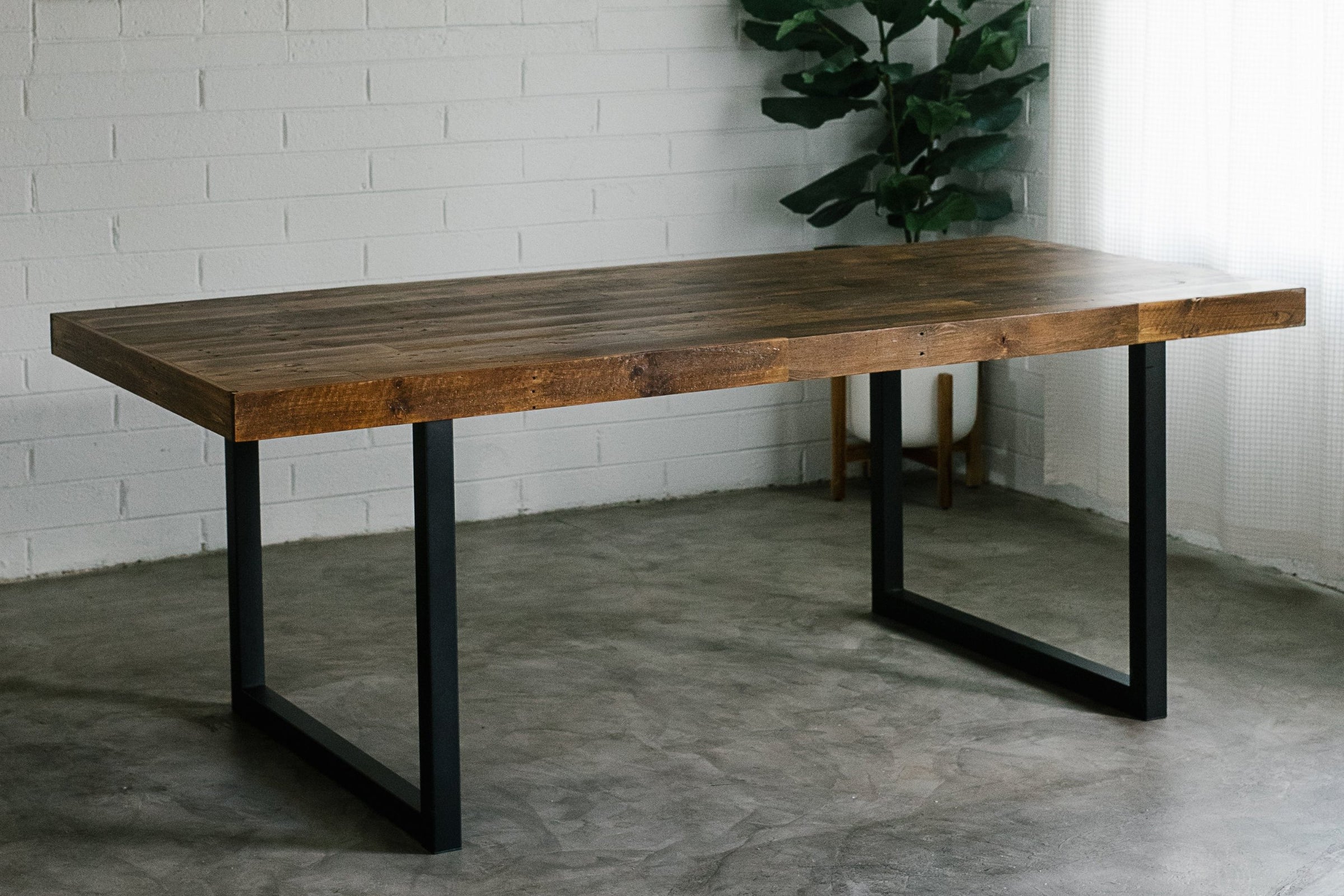Discover Durable and Elegant Dining Table Legs Wood for Every Home
Discover Durable and Elegant Dining Table Legs Wood for Every Home
Blog Article
Checking Out the Different Kinds Of Dining Table Legs Wood for Your Eating Space
The option of eating table legs timber can profoundly affect both the aesthetic and practical high qualities of your dining area. Solid wood choices, such as oak and walnut, give a classic look with unrivaled longevity, while crafted wood alternatives supply ingenious layouts that imitate the splendor of all-natural grains.
Solid Timber Options

Moreover, solid timber is renowned for its toughness and long life. Unlike engineered materials, solid wood is much less susceptible to warping and damages gradually when correctly kept. This makes it a perfect option for households or those who regularly organize celebrations. Each item of strong timber is unique, showcasing private characteristics that add to the charm and character of the table.
In addition, strong timber can be completed in numerous methods, ranging from natural oils to stained finishes, permitting home owners to individualize their furnishings to match their decoration. In summary, selecting strong timber for dining table legs not only ensures architectural stability however also enhances the aesthetic charm of the dining location, making it a beneficial investment for any kind of home.
Engineered Timber Alternatives

Plywood, built from numerous layers of wood veneer, is secure and specifically strong, making it an excellent selection for dining table legs. Its split structure allows it to hold up against modifications in humidity and temperature level far better than conventional solid wood. MDF, on the various other hand, provides a smooth surface area for painting or veneering, making it possible for designers to attain a polished appearance while maintaining architectural integrity.
Particleboard, usually utilized in economical choices, gives good toughness and is lightweight, making it less complicated to deal with. Nonetheless, it may not be as long lasting as plywood or MDF. It is vital to take into consideration the desired use and preferred visual when choosing engineered timber alternatives. These materials not just boost the functionality of dining rooms yet also enable for better design flexibility, making sure that modern and traditional designs can exist side-by-side sympathetically.
Reclaimed Wood Features
Redeemed timber offers an one-of-a-kind mix of sustainability and personality, making it a progressively preferred option for eating table legs. Sourced from old barns, factories, and various other structures, recovered wood embodies a history that brand-new products merely can not reproduce. Each item brings its own tale, noted by unique flaws, knots, and varying grain patterns, which add to a table's one-of-a-kind visual charm.
Along with its visual beauty, recovered wood is an environmentally pleasant alternative. By repurposing previously used products, it minimizes the demand for brand-new lumber, therefore helping to conserve woodlands and reduce waste. This my explanation straightens with an expanding consumer choice for sustainable techniques in furniture.
Additionally, redeemed wood is frequently extra durable than newly gathered timber because of its age. The natural drying procedure that reclaimed timber goes through lead to a denser and stronger product, making it less prone to warping and splitting. This boosts the longevity of eating tables, allowing them to stand up to the rigors of everyday use.
Softwood vs. Hardwood
When picking dining table legs, comprehending the differences in between softwood and hardwood is critical for achieving both aesthetic and practical goals. They generally display a more rustic appearance, making them suitable for informal or country-style eating rooms.
On the other hand, hardwoods, sourced from deciduous trees like oak, cherry, and maple, are renowned for their density, strength, and toughness. The detailed a knockout post grain patterns and abundant tones of woods give a timeless and sophisticated appeal, making them perfect for official eating setups. While hardwoods have a tendency to be a lot more costly and much heavier, their durability against wear and tear often justifies the financial investment.
Inevitably, the choice between softwood and wood for eating table legs need to align with your layout vision, usage needs, and spending plan, making certain that your eating area reflects your individual style while remaining practical in time.

Therapies and coatings
The visual allure and long life of table legs can be substantially improved with different surfaces and treatments. These processes not only shield the timber from damages however likewise elevate its appearance, permitting it to enhance varied interior designs.
One typical treatment is staining, which penetrates the timber and boosts its natural grain while adding shade. Discolorations supply a rich, stylish look, making it possible for home owners to match their furnishings with existing design. On the other hand, clear finishes such as polyurethane or varnish develop a safety layer without altering the timber's original hue, guaranteeing durability against wear and tear.
Furthermore, natural oils, like tung or linseed linked here oil, nurture the wood and offer a refined shine, all while being environmentally friendly. These oils allow the surface area to breathe, protecting against wetness buildup and possible warping.
For those looking for a rustic appeal, weathered or troubled finishes can be related to create an aged look, including character to the item. Eventually, the choice of treatments and finishes depends upon personal preference, wanted appearances, and the particular wood kind, making it necessary to take into consideration these aspects when picking table legs for your area.
Verdict
In final thought, the option of dining table leg products dramatically influences both the aesthetic and useful facets of an eating space. Strong timbers, engineered alternatives, and recovered options each offer unique benefits, dealing with various preferences and requirements. Recognizing the differences between hardwoods and softwoods, in addition to appropriate surfaces and therapies, permits for informed decision-making. Eventually, the option of timber kind need to align with preferred style, toughness, and ecological considerations, enhancing the overall dining experience.
The option of dining table legs wood can profoundly impact both the aesthetic and functional top qualities of your eating room - Dining Table Legs Wood. Strong timber alternatives, such as oak and walnut, supply a timeless appearance with unequaled toughness, while crafted wood alternatives offer innovative layouts that resemble the splendor of natural grains. Strong timber provides a timeless quality that can boost the total style of a dining room. Each piece of solid timber is special, showcasing individual characteristics that include to the beauty and personality of the eating table
Additionally, reclaimed timber is commonly much more durable than freshly gathered timber due to its age.
Report this page